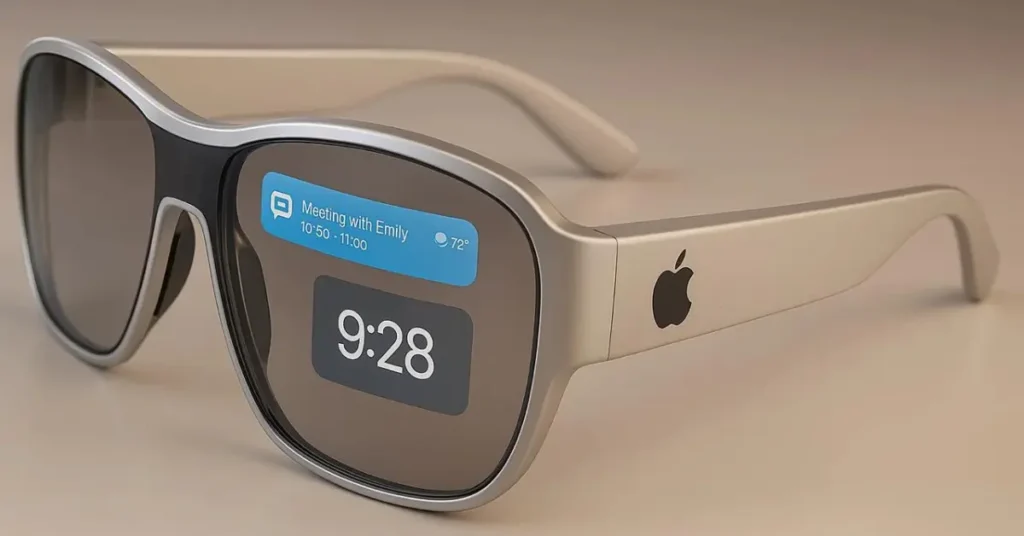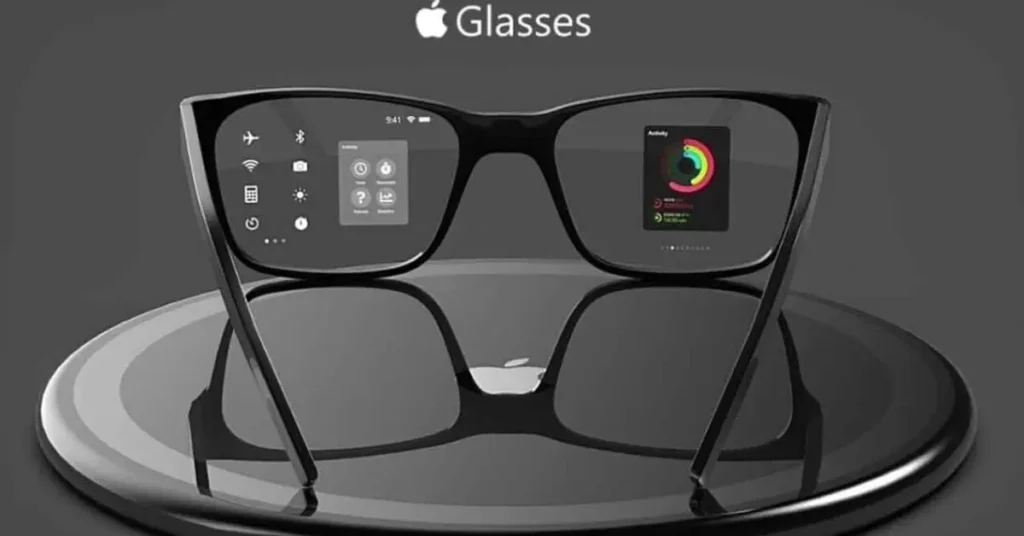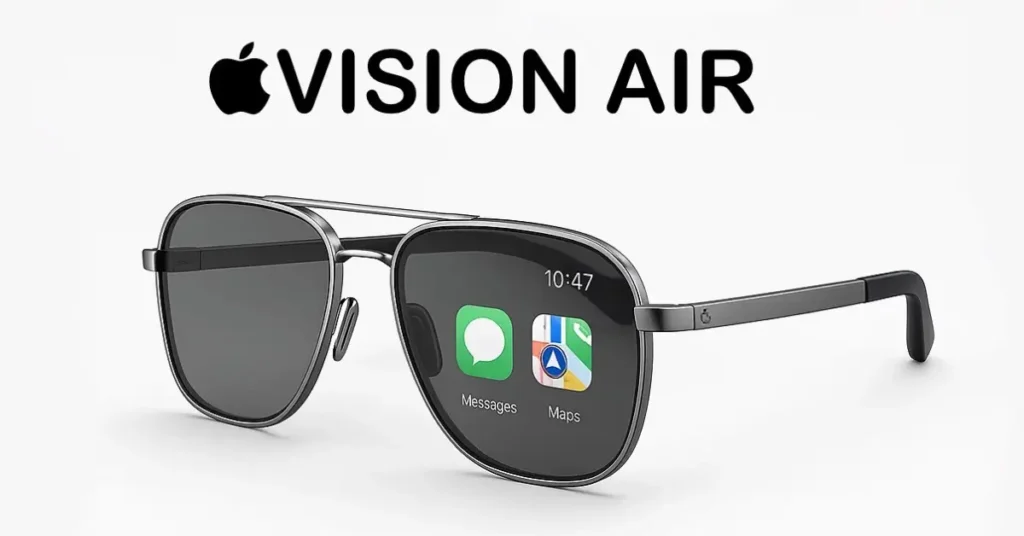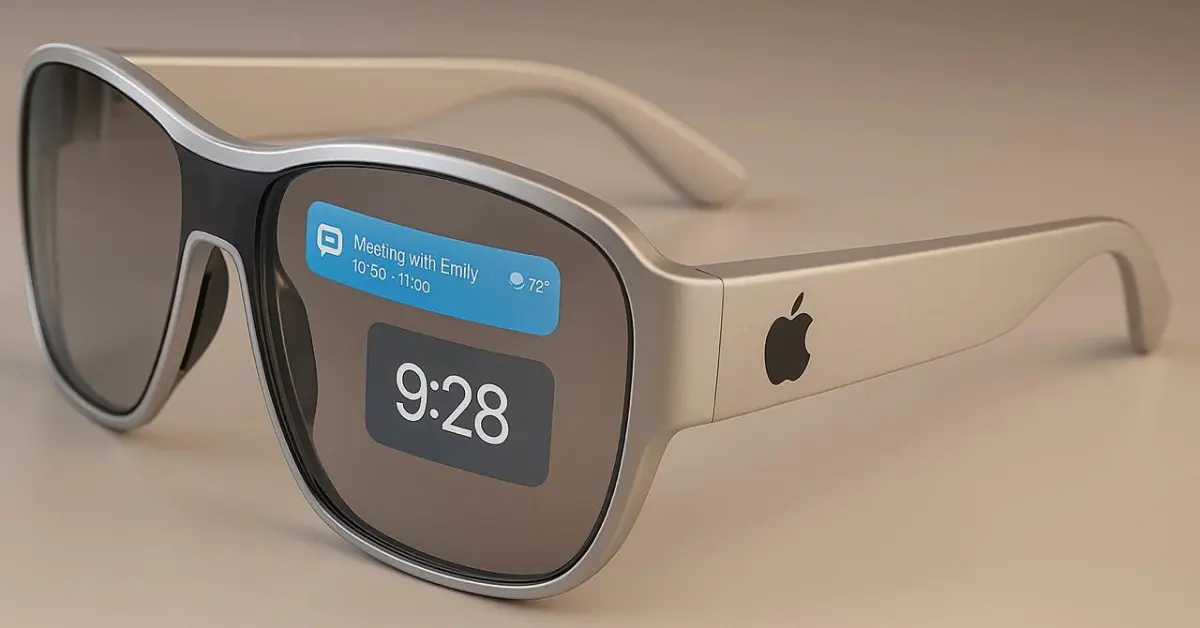Apple smart glasses are now at the center of Apple’s future plans. If you’ve been following Apple’s big moves, you probably know about the Apple Vision Pro, the company’s ultra-premium mixed reality headset.
When it launched in early 2024, there was a lot of excitement. It promised to change the way we interact with digital content.
But here’s the big news: reports now say that Apple has scrapped its plans to make a lighter version of the Vision Pro headset. Instead, the tech giant is focusing on Apple smart glasses that could go head-to-head with Meta’s Ray-Ban smart glasses.
As a digital creator who has closely followed the rise of AR/VR devices, this makes me think that Apple is in it for the long haul.
This choice may seem like a step back, but it could be a smart move that shapes the future of wearables.
Let’s talk about what this means for you, why Apple did it, and what you can expect in the next few years.

Apple smart glasses promise stylish, lightweight design and everyday usability, making them the future of wearable technology for ordinary users worldwide.
Why Apple Pulled the Lighter Vision Pro Headset
1. The Vision Pro was too heavy and cost too much
If you’ve seen or tried the Apple Vision Pro, you know it’s big and heavy. Wearing it for long sessions can be tiring.
On top of that, the $3,500 price tag makes it accessible only to a very small group of people.
Apple likely realized that making a slightly lighter version wouldn’t fix the real issue: mainstream adoption. People want something that looks good, feels natural, and doesn’t cost a fortune.
2. Meta is getting stronger
Meta’s Ray-Ban smart glasses are already gaining popularity. They look like regular sunglasses, but can take photos, record videos, and even let you livestream.
Apple doesn’t want to fall behind in a category that could define the future of personal technology.
3. Tim Cook’s focus on Apple smart glasses
Bloomberg recently reported that Apple CEO Tim Cook is more focused on smart glasses than on AI.
He is said to spend much of his time pushing Apple’s teams to bring glasses to life.
For Cook, this isn’t just another gadget—it’s Apple’s chance to lead in a new category, just like the iPhone once did.
What Apple Is Working on Instead: Smart Glasses
It’s clear that Apple’s next big step is to skip the lighter Vision Pro and fast-track smart glasses.
What We Know So Far:
- Two versions are in development:
- A basic version that connects to your iPhone (like an accessory).
- A more advanced version with its own built-in display for more independence.
- Launch timeline: Expected between late 2026 and early 2027.
- Likely features include:
- Built-in camera and microphone
- Music playback through tiny speakers
- Lightweight and premium Apple design
- Seamless integration with iOS and Apple’s AI tools
Doesn’t this sound fun? Imagine wearing glasses that not only protect your eyes but also let you capture moments, play music, and maybe even see notifications without pulling out your phone.

Apple smart glasses could seamlessly integrate with your iPhone, offering hands-free photos, music, and AR features for daily convenience.
A Real-Life Example: Why Apple Smart Glasses Are Better Than a Headset
Think about it. When was the last time you wanted to wear a bulky headset in public? Probably never.
But sunglasses? You wear them all the time without even thinking about it. That’s the beauty of smart glasses—they fit into your lifestyle naturally.
I remember trying out Meta’s Ray-Ban glasses at a tech event. They looked and felt like regular shades, but being able to snap a photo hands-free felt futuristic.
If Apple can improve on that with its design and ecosystem, smart glasses could easily become as common as AirPods.
Apple’s Big Goal: Outdoing Meta at Its Own Game
Tim Cook doesn’t just want to make Apple smart glasses—he wants Apple to beat Meta at its own game.
Meta may have the first-mover advantage, but Apple has something Meta doesn’t: a powerful ecosystem.
If you already use an iPhone, Apple Watch, AirPods, or MacBook, imagine how easily Apple Glasses could blend into your daily life. That’s Apple’s secret advantage.
For related reading, check out our post on the Apple Watch Series 10 and how it integrates with iPhone features.
Why This Change Is Important for You
This shift might sound like corporate strategy news, but it could affect your everyday life sooner than you think.
- Better Accessibility: Apple smart glasses will likely cost far less than Vision Pro, making them available to a wider audience.
- Lifestyle Fit: No special setup or space needed—they’ll fit into your normal routine like regular eyewear.
- AI + AR for Everyday Life: Glasses could eventually translate signs on the go, guide you with directions, or even send health reminders.
Possible Problems Ahead
Apple’s path won’t be without challenges:
- Privacy concerns: Hidden cameras in glasses could raise eyebrows. Apple needs to address this transparently.
- Battery life: Packing advanced tech into lightweight frames isn’t easy. Users won’t want glasses that last only an hour.
- Competition: By 2027, Meta and others might already be on their 2nd or 3rd generation of smart glasses.
But history shows Apple doesn’t rush products—it perfects them. The iPhone wasn’t the first smartphone, but it became the gold standard.

Apple smart glasses are expected to combine premium design, lightweight build, and advanced AR capabilities for next-generation wearable experiences.
Frequently Asked Questions About Apple Smart Glasses and Vision Pro
- Why did Apple pull the lighter Vision Pro headset?
It wouldn’t solve the problems of weight, cost, and mainstream adoption. Apple wants to focus on a product people will actually use daily, the-Apple Smart Glasses - When Apple smart glasses will be released?
The first version is expected in late 2026 or early 2027. - Will the Vision Pro be replaced by Apple Smart Glasses?
Not entirely. Vision Pro may remain as a high-end device, but Apple is redirecting resources to focus on glasses. - What will Apple Smart Glasses be able to do?
Early reports suggest a camera, microphone, music playback, and iPhone integration. Advanced versions may include AR overlays. - Will they look like regular glasses?
Yes. Apple is expected to design them as stylish, lightweight eyewear—closer to Ray-Bans than bulky headsets. - How much will Apple Glasses cost?
No official pricing yet, but they will likely cost much less than Vision Pro’s $3,500. - Is this Apple’s response to Meta’s Ray-Ban smart glasses?
Yes. Apple clearly wants to compete directly in the growing smart glasses market.
Conclusion: A Smart but Bold Turn
If you were hoping for a cheaper, sleeker Vision Pro headset soon, Apple’s decision to cancel the lighter version may feel disappointing. But in reality, this change could have a much bigger impact.
By betting on smart glasses, Apple is aiming to make a product you’ll actually use daily—something light, stylish, and deeply connected to your digital life.
For Apple fans, the next few years could bring a wearable revolution as big as the iPhone or AirPods. We’ll likely see the first versions around 2026–2027.
One thing is clear: Apple isn’t giving up on AR—it’s just shifting the battlefield.
If you want to stay updated on all things Apple and wearables, keep checking autotechjagat.com for the latest insights.
Read Also:
- Game-Changing Meta Ray Ban Glasses Explained: A Confident Step Toward the Future of Wearable Tech
- Secure Your Chats with the Arattai App: India’s Brave Answer to WhatsApp
